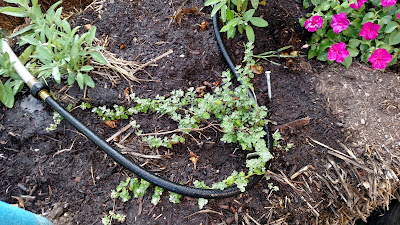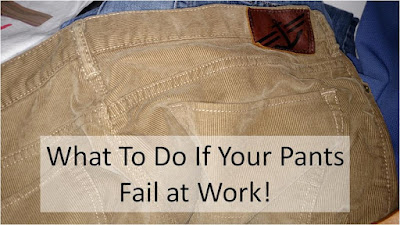Emergency Fund- Bad Advice?
I have read on many personal finance blogs that the way out of debt starts with building a cash emergency fund, with a goal of being able to cover several months of expenses using your emergency fund.
Although this may work well for some, for me there are several problems with this approach.
First off, I don't want to park this kind of cash in a savings account making
0% interest! Let's say several months of living expenses amounts to $10,000. If you keep this in savings account for 30 years at 0.85% interest, you'll end up with $12,903. If you invest this money instead and get an 8% return, you'll end up with $109,357. So having the cash emergency fund would cost you around $100,000! You can
run the numbers yourself on my savings calculator.
Not everyone who recommends having an emergency fund recommends keeping $10,000- I just wanted to pick out a number to make my point.
The next problem I have with building a cash emergency fund while you have credit card debt- if you have
credit card debt at 20% interest, paying that down seems to me to me to be the best use of any available funds. It would be hard for me to look at money sitting in a savings account and not pay down high interest credit cards.
My third major problem with advising people to build up lots of cash and keep it around-
it would be tempting to spend it! Even if you have credit card debt, if you have $10,000, or even $2,000 sitting in a savings account, I think many people would be tempted to spend it if the right opportunity came along. Maybe a fun project car to fix up, or getting in on a special vacation offer, etc. If you have $0 savings and mostly maxed out credit cards, it is harder to spend more money and you won't forget that you are in debt. If you have money sitting around not being used, I think it would be at risk for unplanned spending.
In Case Of Emergency...
So, what if you don't have an emergency fund and a financial emergency comes along? No matter how much you have in an emergency fund, something could happen that would take more money than you have saved up. In this case, you would end up using credit or borrowing from your retirement fund to pay for the emergency.
This is not good, but I think most people would be further ahead focusing on paying down credit cards and building investment funds rather than parking cash in an emergency savings fund. Hopefully that emergency won't happen, but if it does happen while you are still paying down credit card debt, you'll have some funds build up in investments and some credit cards paid off that will be resources to get through the emergency.
Is Putting Money In an Emergency Fund Bad Advice?
I discussed my concerns about emergency funds with a popular blogger,
Chris Peach at Money Peach. He replied that from the math perspective, my objections to advising people to set up an emergency fund make sense. But from a behavioral perspective, getting people to develop the discipline to save money and watch that savings account grow is powerful and can change behavior. Plus having a cushion can help people avoid charging more on their credit cards.
I think Mr. Peach had a nice comment when he said I can be right on my blog and he can be right on his blog. Nicely said. From my perspective, setting up an emergency cash fund when you could be paying down high interest debt or investing with a historical average return of around 9% doesn't make much sense. But if you are trying to change your behavior and get away from depending on credit cards, maybe setting up an emergency fund could help.
Even with my reservations about putting a lot of cash in an emergency fund, I do keep cash around. What if the electronic networks go down and credit cards don't work for some reason? I like to have enough cash to cover a couple weeks of food and gas at least in case of a disaster.
In conclusion, having cash at home or in a saving account has a cost. If you have credit debt, you could be getting a 20% return on the money. If you invest in stocks, you could be getting a 9% historical average return over the long run.
From the perspective of optimal financial results, I would recommend people with credit card debt to pay into an emergency fund only if this will help control credit card spending. Otherwise, use all available funds to pay down the high interest debt and at the same time invest some money in stocks. I would suggest saving up enough cash to cover basic expenses for a few weeks to survive a disaster.
Copyright © 2015 by Dr. Penny Pincher. All Rights Reserved. Privacy Policy















